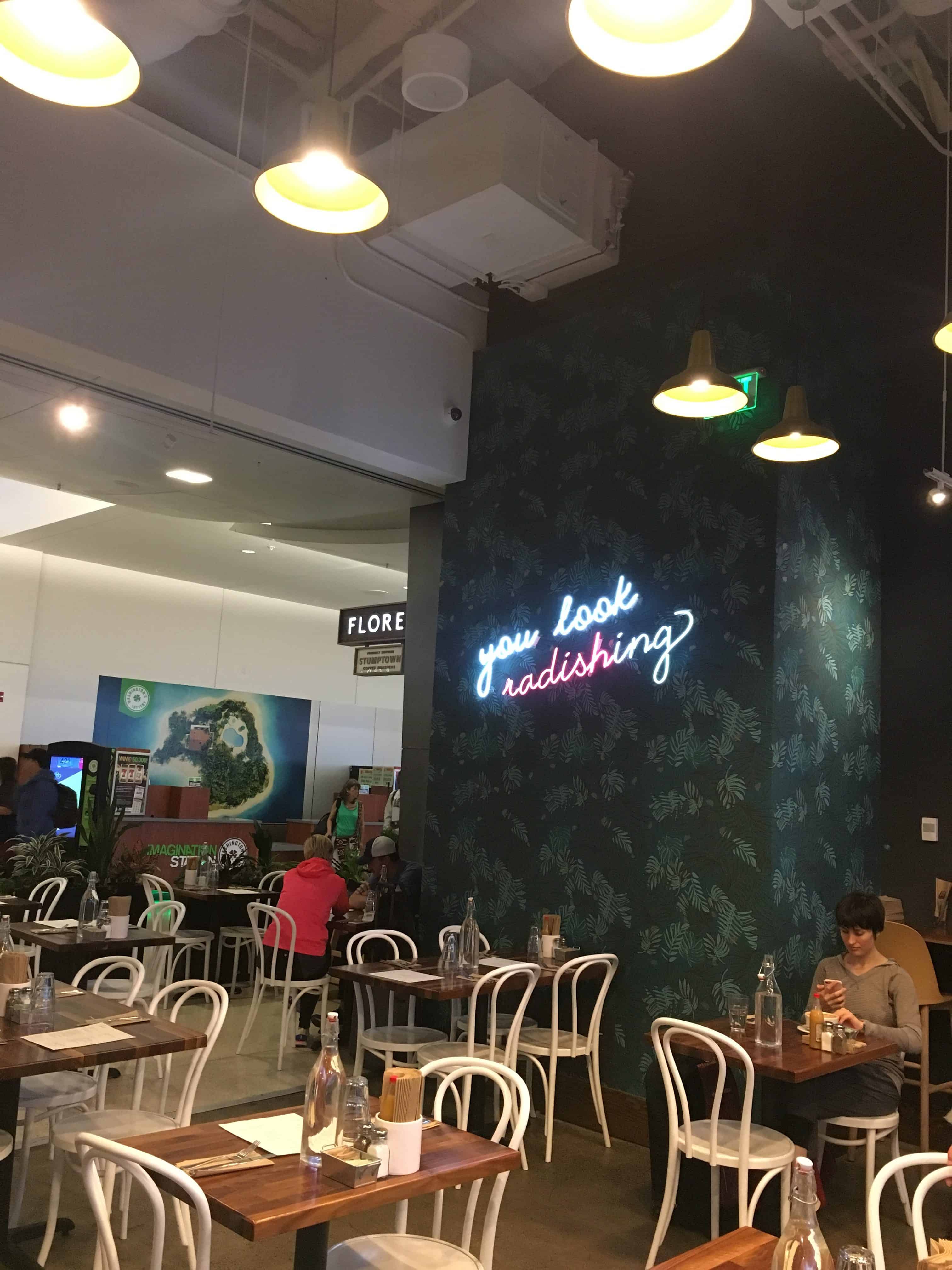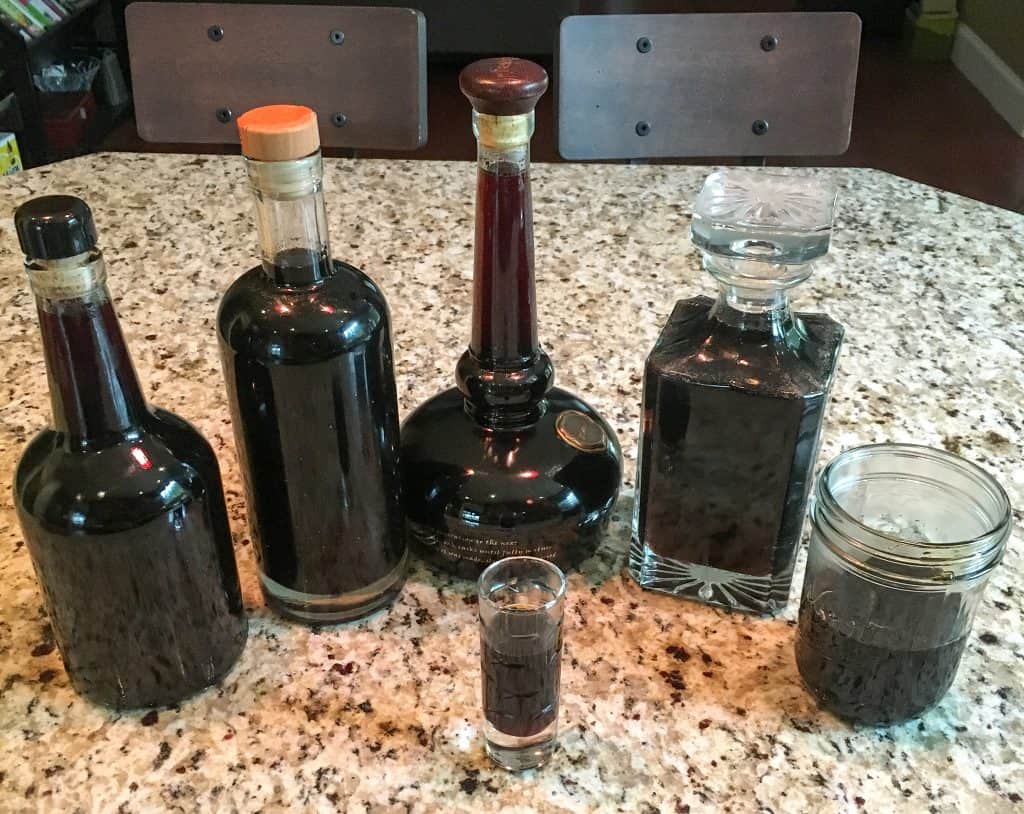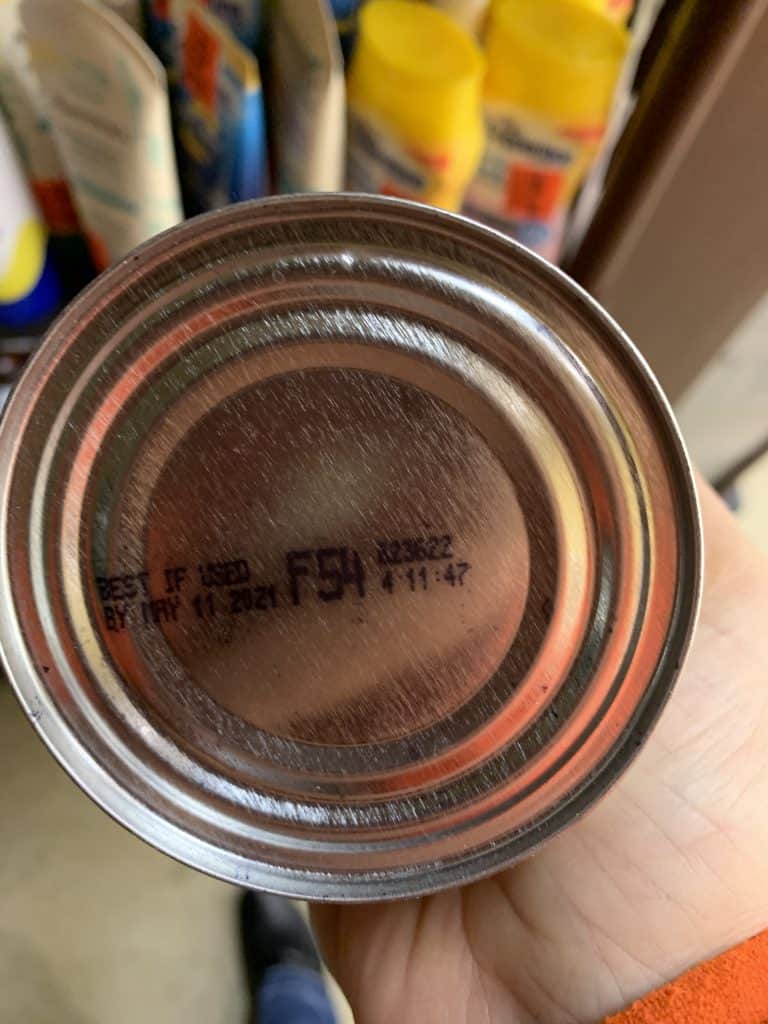Eating Vegan While Traveling
#VeganMoFo18 Day 15 – Eating Vegan While Traveling
Traveling while vegan can seem really daunting at first. You’re in a new location, unsure about availability at restaurants, TSA has limitations on what you can bring through security, and there’s not a lot of food on airplanes anymore. But with a little pre-planning, it’s totally doable and you won’t starve in the process. We’ve traveled domestically and internationally with good success, and I’m here to share some of my tips for traveling vegan.
Bag Lady
We have a collection of bags I bring with us when we travel. I always travel with reusable grocery and mesh produce bags. They fold flat and take up hardly any space in your luggage. We always stop at a grocery store or farmers market at some point during our trips, usually at the beginning, so we have a good stock for our trip, and it’s nice not to have to use plastic bags. We also have a little soft cooler that folds up and fits in my luggage. We picked it up in Hawaii when we decided to camp overnight at a beach we love and it’s been a wonderful addition. We can grab ice at any hotel or rental lodging and then have a travel lunch with us in case we can’t find a restaurant that fits our needs.
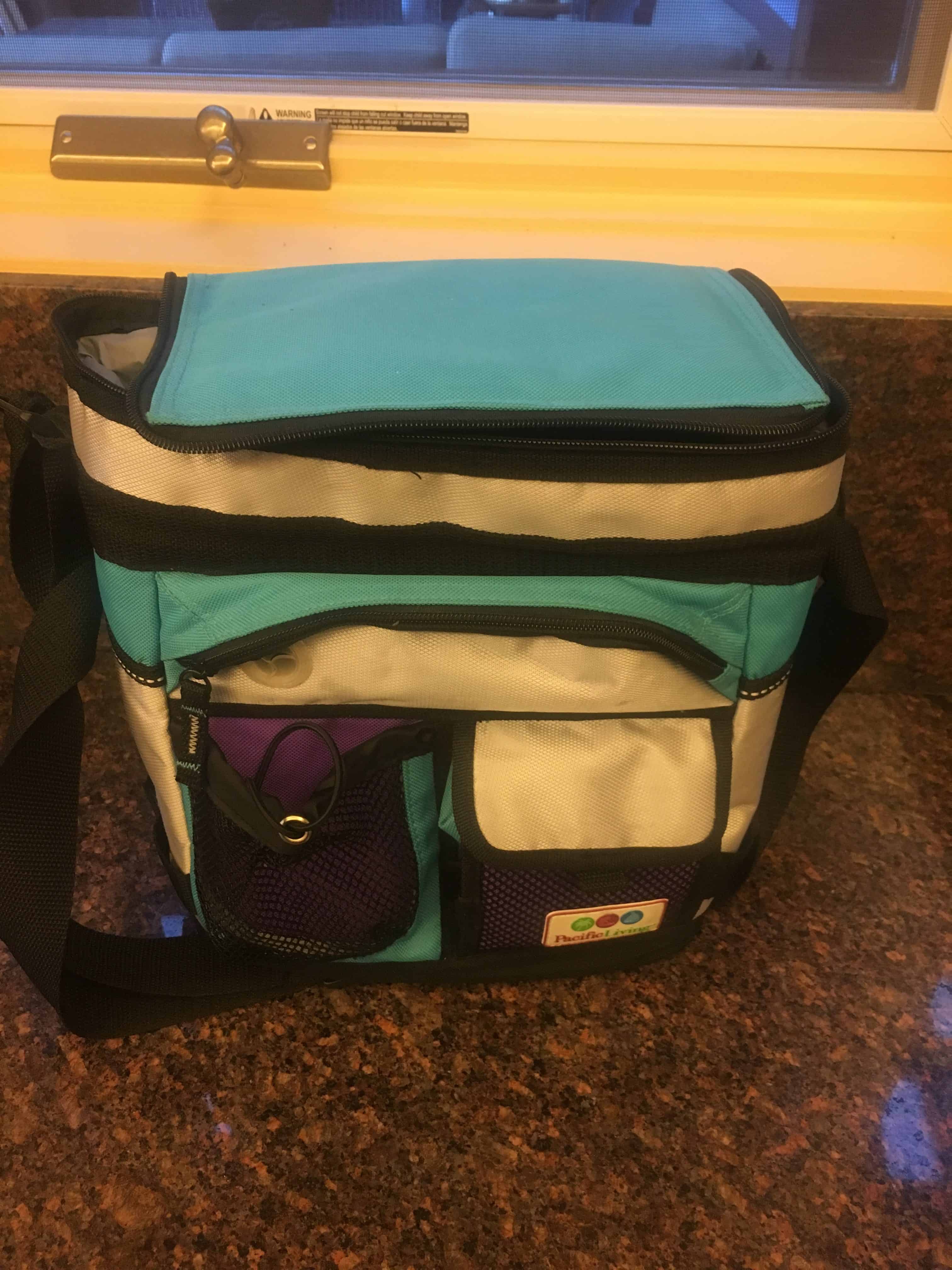
Fabric Travel Cooler
Water Boy
I also bring along a reusable water bottle. We have Hydroflask bottles because they are stainless steel and can be used for hot or cold beverages. They keep hot things hot and cold things cold—a modern day Thermos! You can’t bring liquids through TSA security, but you can bring an empty water bottle and fill it up on the other side. Most airports I’ve traveled to now have water bottle refilling stations scattered throughout the terminal. Or, you can stop at a coffee shop and fill up with coffee before you board your plane. Unfortunately, I’ve not encountered any airline that will fill your water bottle during the flight’s beverage service, so I make sure my container is full when I board. I have needed more beverages in flight at times, so I opt for an aluminum can of seltzer water and ask for the whole can, no cup, and they’ve always complied with that. I feel best about this option because the can is very recyclable. Note, don’t refill your water bottles in the airplane lavatory—airplane tap water has a history of fecal coliform contamination.
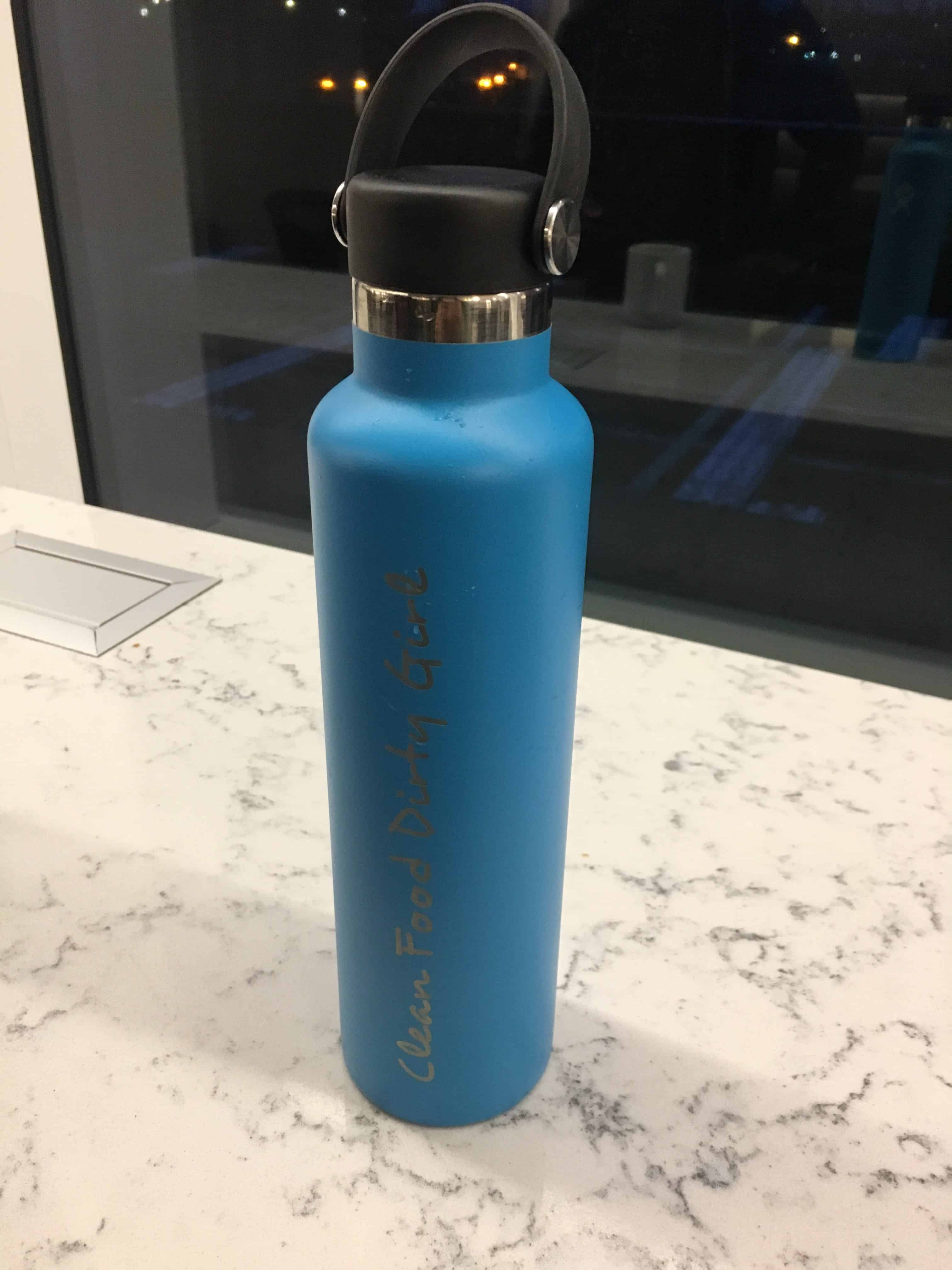
Hydroflask water bottle
We generally fly United, but Alan flies Alaska Airlines as well sometimes. United has the Eco-Skies program which is working hard in on-board recycling and use of biofuels from recycled products. They also announced they are switching to bamboo cocktail sticks and picks in their #sheddthestraw program, in addition to not providing plastic straws during on-board service and in their United Clubs. Alan noticed last week during an Alaska flight that the flight attendants took trash they collected and separated it all out into different types of recyclables during the flight! Alaska publishes a sustainability report on their website every year, and here’s the data on 2016. And here is a little video from United on their initiatives:
Both airlines note that you can bring your own liquids on board that you filled up after going through security, but it doesn’t appear they are considering refilling those bottles in-flight. We always fill out the post-flight surveys we get from United and will be asking for this change in our comments. Believe it or not, these surveys and comments do get read and make a difference—we’ve had them call to follow up on things we’d commented on, really!
Besides using the water bottle in flight, most hotels we go to have infused water in their lobby. We simply top off as we’re leaving. It’s a great refresher!

Infused Water at Residence Inn
Airplane Food
Domestic flights don’t provide food on their flights anymore, other than in business- or first-class. They do offer snacks, but they usually aren’t vegan and are in single-serve plastic, and often sell snack boxes, which may have a vegan option of highly processed items in single-serve plastic. We refuse all of these. They aren’t healthy for us or the environment. So you’ll need to bring your own snacks or meals if you want to eat during the flight.

My Tiffin with Sweet Potato, Nuts, and Plums
I pack a couple of things for every flight. I like to use my tiffin, which is fairly small, has two compartments, and fits well in my carry-on bag. We bring our cloth napkin with our silverware, minus the knives, as even though butter knives are supposed to be ok, TSA agents have discretion to toss out things and we just didn’t want the hassle of it. In my tiffin, I bring cubed, baked sweet potato, always—it’s a great snack, works for any meal, and is very filling! I also pack nuts, fruit, cut up veggies. I also bring dehydrated soup that is available at one of my stores in the bulk section. That way I can simply ask for hot water from a cafe prior to getting on the plane to add to and have hot soup on board. TSA has been cracking down on liquid foods going through TSA. People have reported having their hummus, overnight oats, etc. tossed out at security. I would suggest spreading hummus or soft vegan cheeses on bread and making sure your overnight oats are mostly oats, not liquid, to avoid this problem.
If you do get to fly in the premium cabin, make sure to ask for vegan options in your preferences. It used to be that vegan meals were only available on international flights, but in the last few months, we have received vegan meals on domestic flights in Business class on United. We do accept these meals because they come with real silverware and dishes rather than single-use plastic. And afterward, I make sure to send an email thank you so the airline knows this is a very appreciated service.
Airport Food

Sankaku at San Francisco International (SFO)
Airports have been a vegan food desert for a long time, but this is changing. The Physicians Committee for Responsible Medicine has an Airport Travel Guide, but it hasn’t been updated since 2015. PETA has a more current guide, but only for Atlanta, LAX, Tom Bradley International in LA, O’Hare, Dallas/Ft. Worth, and JFK, broken down by terminal locations. I suggest Googling specific airports prior to your travel to see if bloggers or other resources have written about the locations you are flying in or out of. We are super fortunate that Cafe Flora, one of our favorite vegetarian/vegan restaurants in Seattle has opened Floret, a vegetarian/vegan cafe in SeaTac Airport at the intersection of Concourse A & B. At San Francisco International, we have discovered Sankaku Sushi & Noodle in Terminal 3 by gate 71B. Sankaku is our favorite treat–we get the Healthy Tofu Noodle Soup with Vegetarian Broth (you have to specify vegetarian broth). Alan gets soba noodles and I get udon and an add-on of broccoli. They also offer veggie sushi. If you order for there, you get a compostible bowl (SFO requires all the single-serve dishes and utensils to be compostible) but we use our own silverware and cloth napkins.

Floret at SeaTac
There are other work-arounds too. A lot of airports have a Mexican restaurant, so you can order a bean burrito without meat, cheese, or sour cream. Often there are Asian restaurants with stir-fries and rice. You can find fruit cups and sometimes hummus wraps with only veggies in takeaway coolers. At terminal restaurants, you can often order a salad and have them hold meat, cheeses, and dressings.
Because Alan travels so much, we have access to the United Club. This past year, United has made great changes to the food options in their club and have tons of options now. There’s always fresh fruit and vegetables, oatmeal for breakfast, and usually a hot vegan soup. There’s been salad bar options too. This is something we’d asked United for on every survey, and it’s made a difference. I’ve been told that the American Airlines Admiral’s Club has added vegan options as well.
Chew-Chew!
We travel Amtrak quite a bit to visit family and have been happily surprised on their food options in the dining car. The Amtrak Cascades line has an Amy’s Kitchen vegan burger on their menu and has had a vegan black bean wrap as well. You can also bring your own food on the train, including liquids.
Eating Out on the Town
As much as possible, we try to have accommodations with at least a refrigerator and a microwave, this way we can prepare a few things of our own. We do prefer having a kitchenette or full kitchen. Our first stop is at a grocery store with our reusable shopping and produce bags where we get oats, fruit, sweet potatoes, maybe some nuts. This way we have breakfasts and snacks, at a minimum, if not a “we can’t find anything to eat here meal.” If you’re staying a longer time, say a week, you can plan a couple meals that are easily made in hotel room kitchens. Many hotels have continental breakfasts included, which is really great for oatmeal and fruit.
If we are planning on going out for meals, I do some research online or on some apps to find good options. Happy Cow is a wonderful app for finding vegan and veg-friendly places all over the world. You can also use their website. Vanilla-bean is a new app and website that has US and international restaurants in it’s database. The restaurant reservation app, OpenTable, is also really helpful as they do have an option to search for vegetarian and vegan restaurants. VeganXpress can help you find fast food vegan options, should you decide to just go that route. I also like to search facebook for vegan group pages in the areas we are going to and also Google for the best vegan restaurants in the area. We’ve been working through The 24 Most Romantic Vegan Restaurants in the World list since the article came out in 2014, and traveling is a great way to hit those! The Veganagogo app is a great help if you are traveling internationally, as it translates key vegan questions into 50 different languages; unfortunately, I recently learned it’s only available on the iPhone, not Android devices.
If you don’t find any hits on these apps, don’t despair. You can look at many restaurant menus online to get a feel for what they have and what might be veganizable. You can also call ahead and ask or just go to a restaurant and inquire about how they may be able to accommodate. Mexican, Greek, Japanese, Thai, and even steakhouses often have accidentally vegan or easily made-vegan meals.
Traveling while vegan is not too bad as long as you are prepared. And honestly, when it comes to air travel, on the plane, we’re pretty much in the same predicament as non-vegan travelers as the airline doesn’t provide much food to anyone. Plan ahead, and you’ll be in great shape!
Do you like this post? Please share....
[mashshare]
If you liked this post, you might like one of these:
Categories:
Tags:

[Trī-māz-ing]
Cindy wants you to be Trimazing—three times better than amazing! After improving her health and fitness through plant-based nutrition, losing 60 pounds and becoming an adult-onset athlete, she retired from her 20-year firefighting career to help people just like you. She works with people and organizations so they can reach their health and wellness goals.
Cindy Thompson is a national board-certified Health and Wellness Coach, Lifestyle Medicine Coach, Master Vegan Lifestyle Coach and Educator, Fitness Nutrition Specialist, Behavior Change Specialist, and Fit2Thrive Firefighter Peer Fitness Trainer. She is a Food for Life Instructor with the Physicians Committee for Responsible Medicine, Rouxbe Plant-Based Professional, and Harvard Medical School Culinary Coach, teaching people how to prepare delicious, satisfying, and health-promoting meals.
She provides health and lifestyle coaching at Trimazing! Health & Lifestyle Coaching. Cindy can be reached at info@trimazing.com.
Subscribe to the Trimazing Blog
Receive occasional blog posts in your email inbox.
Subscribe to the Trimazing Blog
Receive occasional blog posts in your email inbox.

